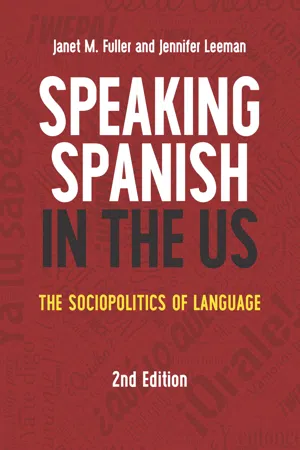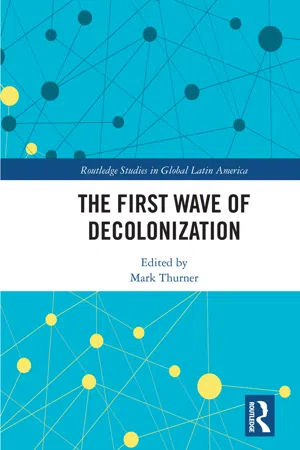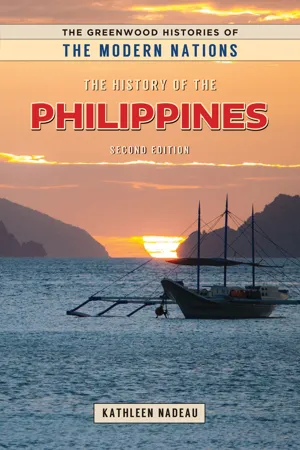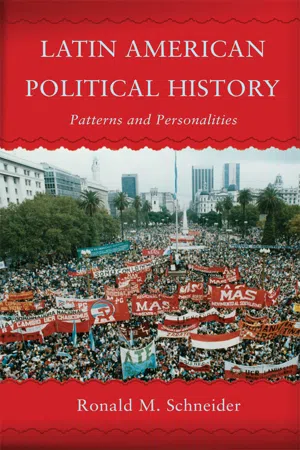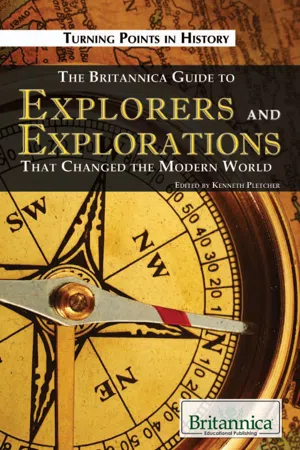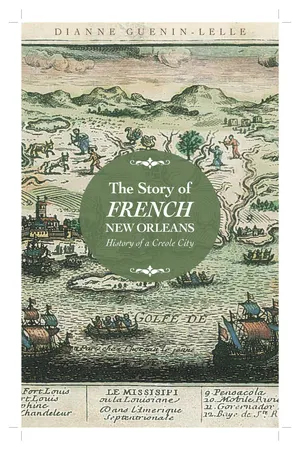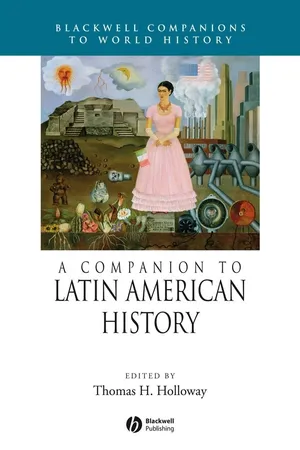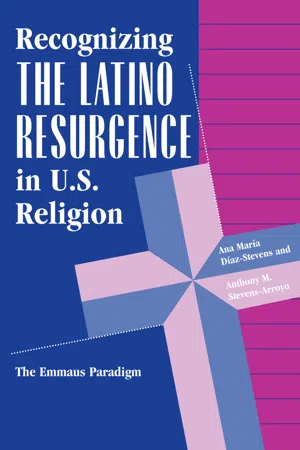History
Spanish Colonization
Spanish colonization refers to the period when Spain established and expanded its territories in the Americas, Asia, and the Pacific. This colonization involved the conquest and settlement of indigenous lands, the imposition of Spanish culture and religion, and the exploitation of natural resources. It had a profound and lasting impact on the demographics, culture, and political systems of the colonized regions.
Written by Perlego with AI-assistance
Related key terms
9 Key excerpts on "Spanish Colonization"
- eBook - ePub
Speaking Spanish in the US
The Sociopolitics of Language
- Janet M. Fuller, Jennifer Leeman(Authors)
- 2020(Publication Date)
- Multilingual Matters(Publisher)
US intervention in Latin America did not end with the annexation of the lands that now comprise the Southwestern US and Puerto Rico. Instead, the US continued to exert economic, political and military power in the Caribbean as well as Central and South America. Whereas 19th and early 20th century intervention was focused on allowing US businesses to maximize profit, primarily by supporting repressive governments that kept workers in line, in the second half of the 20th century Cold War concerns (i.e. stopping communist movements) also played a crucial role. US policies and involvement have contributed to economic and political instability, as well as social unrest, which in turn have led to increased migration to the US. The need for workers in the US has also attracted immigrants, sometimes as the result of active recruiting efforts by businesses. Thus, despite the long history of Spanish in the US, immigration has been a key factor in its continued presence and strength, given the pattern of language shift that results in the third generation being likely to be predominantly or exclusively English-speaking. For this reason, in the second half of chapter we look at the history of Latin American migration to the US, and we briefly consider current immigration policy.Spanish Colonization in North America and the CaribbeanWith the arrival of Christopher Columbus in the Bahamas in 1492, the Spanish began a centuries-long period of exploration, conquest and colonization in the Caribbean and throughout the Americas. Columbus and his men claimed the islands of Cuba and Hispaniola (shared by the present-day countries of Haiti and the Dominican Republic). After returning to Spain and impressing the Spanish monarchs Isabelle and Ferdinand with tales of gold and riches, Columbus again sailed to the Caribbean, bringing more ships, men, and livestock, as well as plans to create a Spanish empire in the Americas.In the Caribbean the Spanish colonists enslaved the Indigenous Taíno population, forcing them to work on sugar plantations and ranches as well as in the mines. As a result of the brutal treatment and exploitation they suffered at the hand of the conquerors, together with the devastating effects of exposure to European diseases, hundreds of thousands of Taínos died. According to Taylor (2002), the number of Taínos on Hispaniola dropped from at least 300,000 in 1492 to just 500 in 1548, a 98% reduction in just over 50 years. Others put the original number higher and the speed of the devastation even faster (Gonzalez, 2011). With the decline of the Taínos, their Arawak language was lost. A few Arawak borrowings into Spanish (and English via Spanish) have endured, including huracán , tabaco and guayaba (‘hurricane, tobacco, guava’). And many Puerto Ricans of all ethnoracial backgrounds refer to the island as Boríquen or Borínquen , and to themselves as Boricuas - eBook - ePub
- Mark Thurner(Author)
- 2019(Publication Date)
- Routledge(Publisher)
1 A Brief Conceptual History of 'Colonia'Francisco Ortega[O]ne should not lose sight that this is a colonia that must depend on her metropolis, Spain, and it must pay with profits the benefits . . . it receives from Spain; and so it takes great skill to combine such dependency with mutual and reciprocal interest, which would cease at the moment when European manufactures and products are no longer needed in these regions.1—Conde de Revillagigedo, Viceroy of New Spain, 1831 [1789–1794]The vast and beautiful dominions that Spain possesses in the Indies are not properly colonies or factories as those of other nations but an essential and integral part of the Spanish Monarchy.2—Royal Order, Supreme Junta, Seville, January 22, 1809Was Hispanic America ever a colony? The question may startle some readers. Undoubtedly, substantial parts and peoples of the region were forcibly annexed by the Hispanic Monarchy in the early sixteenth century. Furthermore, certain strains of Latin America’s nineteenth-century national historiographies grew out of the conviction that the region’s peoples had revolted against the colonial tyranny of the metropole. However, as the two quotes above suggest, in the decades before independence the ‘colonial’ status of the American or ‘West Indian’ possessions of the monarchy were much debated, and even today the idea of ‘Spanish colonialism’ remains a contested and sensitive topic on both sides of the Atlantic. In this essay, I will suggest that the contested and politicized meaning of the term ‘colony’ with which we are familiar today actually emerged in the late eighteenth and early nineteenth centuries.3 At this time, ‘colonia’ came to be associated with an imperfect and dependent status that did injustice to the historical ‘constitutions’ of the American lands and peoples.In what follows I propose to briefly trace the conceptual history of colonia in the Spanish-speaking world up to the years of the wars of independence. My reading aims to avoid the anachronism of projecting back in time present usages. I depart from the conviction that the meaning of colonia - eBook - ePub
- Kathleen Nadeau(Author)
- 2020(Publication Date)
- Greenwood(Publisher)
3 Spanish Colonization (1521–1896) The Spanish Colonization of the Philippines was a significant historical event in the sixteenth century. However, colonization was never so central a phenomenon as to outweigh in importance local historical developments that were already long in place. Some strong Muslim states were well established in the archipelago toward the end of the fifteenth century in Sulu and Magindanao, in southern Mindanao, and Manila, in Northern Luzon. In the region, China, Korea, and Japan held economic and political sway. Colonization and Christianization forcibly changed the course of development of Philippine history. However, Spain was never able to suppress long-established cultural patterns. This chapter examines the historical processes that underpinned the Spanish Colonization of the Philippines. It brings into consideration local viewpoints and ways of life that existed in contradistinction to the European framework. It is by looking at the complex interplay between these two different and opposing systems that we can begin to see some of the factors that helped to shape the modern Philippine nation-state. THE PHILIPPINES IN THE SIXTEENTH CENTURY At the coming of the Spaniards, there were an estimated five hundred thousand people living in the Philippines. 1 The population comprised a large number of distinctly different cultural and linguistic groups, of which most were lineal descendants of Malay immigrants who came to the Philippines from southern and Southeast Asia. They lived on the coasts and along inland bays and rivers. Much of the information that we now have about sixteenth-century Philippine society comes from early chronicles recorded by Spanish clerics. These texts have been closely examined by William Henry Scott (1921–1993), the distinguished American historian who made his home, after World War II, in the Philippines - eBook - ePub
Latin American Political History
Patterns and Personalities
- Ronald M. Schneider(Author)
- 2018(Publication Date)
- Routledge(Publisher)
For these reasons, the discussion here of the sixteenth and seventeenth centuries concentrates heavily upon the Spanish viceroyalties centered in Mexico and Peru, as well as Portugal’s rule in Brazil. Moreover, it is focused upon institutions and practices that survived into the postcolonial era. As the aim is to understand the past as it impacted on what followed, the quite different circumstances that gave rise to new viceroyalties in Bogotá early in the eighteenth century and Buenos Aires six decades later are examined less exhaustively, as are the distinctive variations in important outlying regions of the three core colonies. Finally, this discussion leads into consideration of changes in the colonial system that set the stage for the independence movement at the turn into the nineteenth century.Examination of the three centuries of the colonial period is essential for understanding what followed. As pointed out by Wiarda: “Strikingly, and very much unlike the United States, the colonial legacy of Spanish-Portuguese institutions survived the independence movements of the Latin American territories in the early nineteenth century and the initial stirrings of modernization and lingered on into the early twentieth century.”1The Colonizers’ Baggage
Overall what the Spanish and Portuguese brought with them from the Old World proved more important in shaping Latin America politically than anything they encountered in the New World. Moreover, changes that occurred on the Iberian Peninsula from the sixteenth through the nineteenth centuries profoundly affected the colonies. Hence, a brief summary of these developments precedes the account of their incursions into the misleadingly labeled “New World.”The Moorish occupation of over seven hundred years (AD 711–1492) came to an end in Spain just as the discovery of the Western Hemisphere began.2 - eBook - ePub
- Pablo Escalante Gonzalbo, Bernardo García Martínez, Luis Jáuregui, Josefina Zoraida Vázquez(Authors)
- 2013(Publication Date)
- El Colegio de México(Publisher)
[1] This potential was realized with the conquest of Mexico and the subsequent conquest of Peru, which resulted from the Spanish advancing beyond the islands and onto the continent itself.At the same time, the American continent, which did not yet have that name but was defined as the New World, began to play a role in the circuit of exchanges that was gradually beginning to encompass the globe. Such exchanges involved people, animals, plants, metals, manufactured goods, and everything associated with them, from diseases to culture. Naturally, exchange activities were managed first and foremost with a view to serving European interests, and Spanish interests in particular. That explains the evolution of colonial dependence which would characterize the Americas in the centuries to come.In general terms, that was the context in which the events associated with the beginning of the colonial era in Mexico took place. Specifically, those events originated in Cuba, where the Spaniards had already been established for almost 20 years. Wanting to expand, they organized several expeditions. In 1517, a voyage led by Francisco Hernández de Córdoba brought them to the coast of Yucatán. This trip, which was more of an exploratory journey, produced the first contact between the European and Mesoamerican worlds.The first expedition was followed by another, and a third, by then with the goal of conquest clearly in mind. This implied that the Spaniards had to resolve a variety of legal issues among themselves in order to define and regulate the privileges or rights to which the conquistadors aspired. The third expedition, organized by Hernando Cortés (also known as Hernán Cortés), left Cuba in 1519, cut off its ties there, and ended up founding a town—Veracruz—and setting up a cabildo - Britannica Educational Publishing, Kenneth Pletcher(Authors)
- 2009(Publication Date)
- Britannica Educational Publishing(Publisher)
C hapter 3:Colonial Exploration of the New WorldT he age of modern colonialism began about 1500, following the European discoveries of a sea route around Africa’s southern coast (1488) and of America (1492). With these events sea power shifted from the Mediterranean to the Atlantic and to the countries that developed their maritime power. By discovery, conquest, and settlement, these nations expanded and colonized throughout the world, spreading European institutions and culture.SPAIN: THE CONQUESTS
Only gradually did the Spaniards realize the possibilities of America. They had completed the occupation of the larger West Indian islands by 1512, though they largely ignored the smaller ones, to their ultimate regret. Thus far they had found lands nearly empty of treasure, populated by inhabitants who died off rapidly on contact with Europeans. In 1508 an expedition did leave Hispaniola to colonize the mainland, and, after hardship and decimation, the remnant settled at Darién on the Isthmus of Panama, from which in 1513 Vasco Núñez de Balboa made his famous march to the Pacific. On the Isthmus the Spaniards heard garbled reports of the wealth and splendour of Inca Peru. Balboa was succeeded (and judicially murdered) by Pedrarias Dávila, who turned his attention to Central America and founded Nicaragua.Expeditions sent by Diego Velázquez, governor of Cuba, made contact with the decayed Mayan civilization of Yucatán and brought news of the cities and precious metals of Aztec Mexico. Hernán Cortés entered Mexico from Cuba in 1519 and spent two years overthrowing the Aztec confederation, which dominated Mexico’s civilized heartland. The Spaniards used firearms effectively but did most of their fighting with pikes and blades, aided by numerous Indian allies who hated the dominant Aztecs. The conquest of Aztec Mexico led directly to that of Guatemala and about half of Yucatán, whose geography and warlike inhabitants slowed Spanish progress.- eBook - ePub
The Story of French New Orleans
History of a Creole City
- Dianne Guenin-Lelle(Author)
- 2016(Publication Date)
- University Press of Mississippi(Publisher)
CHAPTER FOURThe Spanish Period: Creolizing the ColonizerIntroductionThe Spanish colonial period is arguably the period of the most intense creolization in New Orleans history. My argument is based on how Spain had no interest in the Louisiana territory, a “gift” the Spanish Bourbon king Carlos III received from his cousin, Louis XV, for his military allegiance to France during the Seven Years’ War. Consequently the Spanish metropole acted in a most deferential way to the local Louisiana population in administering the colony, affording local Creoles freedom not allowed in other Spanish territories. Also due to Spanish manumission practices slaves were allowed to buy their freedom, resulting in the emergence of a remarkably large population of free people of color in New Orleans, further adding to the creolization of the city by implicating new social order, mobility, and self-determination for this significant population of African descent.Throughout the Spanish period, the local Creole population overwhelmingly resisted Spanish rule. The chapter posits that the locals’ mytholgized associations with France and the process by which the act of remaining staunchly French in their collective imaginary suited local resistance to colonial rule and contributed to uniting the disparate, sometimes competing, Creole elements against a common foe. In other words, by self-ascribing a posteriori associations as “French” during the Spanish and later American period this population created a semantic space of opposition to the colonial yoke. Associations with France in the colony after it was no longer French sustained the “in-between-ness” of New Orleans as a hybrid space, which could not be controlled or for all intents and purposes governed by the Spanish and later the Americans. Much of this hybridity consisted of mythmaking and illusion, with associations with France masking a fierce independence and antipathy toward any colonizer, and by displacing that resistance the colonized were able through their own agency to shift their hemispheric allegiance without appearing to do so. - eBook - ePub
- Thomas H. Holloway, Thomas H. Holloway(Authors)
- 2011(Publication Date)
- Wiley-Blackwell(Publisher)
The sedentary areas of Mexico and Peru became the two great viceroyalties of Nueva España and Nueva Castilla, respectively, and were consolidated by the 1550s. Spaniards went immediately to these promising areas of sedentary native populations, lured at first by gold and then later by silver. After the military conquests thousands of Iberians went especially to the economically flourishing areas of the colonies, where employment and other opportunities were most promising. This process was so rapid that every major Spanish city in the “Indies” had been founded by the end of the sixteenth century.The conquests of the sedentary peoples were rapid and permanent. The Spaniards enjoyed a tremendous military and technological advantage. Most people had no place to migrate or escape to and chose not to leave their ancestral, sacred lands. In most places, the Spaniards acquired supplies and local allies with each victory, so that each successive conquest in the sedentary areas made the next one easier. But among the more mobile non-sedentary peoples, fighting in many areas went on indefinitelyand expeditions could not achieve final results. Forts were built, permanent paid soldiers were stationed on frontiers, and native peoples were brought in from other regions as middlemen to help pacify the war zones. Rebellions or new hostilities continued for centuries. The enslaving of Indians and the establishment of missions – ecclesiastical fortresses where people from a large area were congregated – were typical features of European expansion into the vastly underpopulated regions of Latin America. In places such as northern Mexico, the Río de la Plata region, Venezuela, and the Amazonia, Europeans adopted new strategies to take advantage of local situations.Contact with Europeans devastated native peoples in many ways. Nothing remained the same. The initial shock of conquest was accompanied or followed soon after by waves of epidemic diseases, a spiritual and cultural crusade against native religions and life-ways, and multiple attempts to reorganize native society. It is difficult to generalize about the experiences of hundreds of culture and language groups under colonial rule. In general, however, it is safe to say that processes of change were more extensive and rapid in areas where many Europeans went, and were delayed in places where Europeans were few. Resistance to change was often complex and subtle, but many changes resulted from cultural contact over the course of generations, so that individuals, groups, or even whole communities could not, over time, resist all aspects of cultural influence from Spaniards and Africans, nor did they always want to. Likewise, Spaniards and Africans were not immune to native cultural influences. - eBook - ePub
Recognizing The Latino Resurgence In U.s. Religion
The Emmaus Paradigm
- Ana Maria Diaz-stevens, Anthony M Stevens-Arroyo(Authors)
- 2018(Publication Date)
- Routledge(Publisher)
"grifo," or "mulatto," depending on the degree of negritude. Below the mixed race people came Africans, with those born free ranked over those who were slaves. Native Americans were generally on the lowest rung, unless they could speak Spanish and wore European clothing, in which case they were "Ladinos," considered to be culturally mixed with the Spaniards, even if biologically they were indigenous peoples (Lockhart and Schwartz, 1983:129-132).On the eve of the U.S. invasions in the middle of the nineteenth century, the societies of the Latino homelands under Spanish colonialism had important differences from this Latin American pattern of social and racial stratification. The original Spanish settlements in California, New Mexico, Texas, and Florida had been peripheral to the overall colonizing enterprise of Spain. In economic terms, until the dawn of the nineteenth century each of these regions and the island of Puerto Rico were in a dependent position within the economic system of the Spanish colonial world. Dependency in economic matters resulted in an inferior social and political standing as well. Unable to keep its own wealth, or even in some cases to generate any profit, the colonies of the Caribbean and the borderlands north of Mexico were connected only loosely to the Spanish colonial system. These notions are clear to those familiar with dependency and world systems theories (Chilcote and Edelstein, 1974; Frank, 1978), although simpler terminology such as the idea of "fringe" as utilized by James Lockhart and Stuart Schwartz (1983) is adequate to explain the same reality with less ideological baggage. Definitely to be avoided is diffusionist theory, which considers poverty and underdevelopment to have resulted from lack of modernization (see Chilcote and Edelstein, 1974). Rather, we have to view economies and societies as connected to systems that maintain dependency and inferior status as a normal means of exploitation.
Learn about this page
Index pages curate the most relevant extracts from our library of academic textbooks. They’ve been created using an in-house natural language model (NLM), each adding context and meaning to key research topics.
